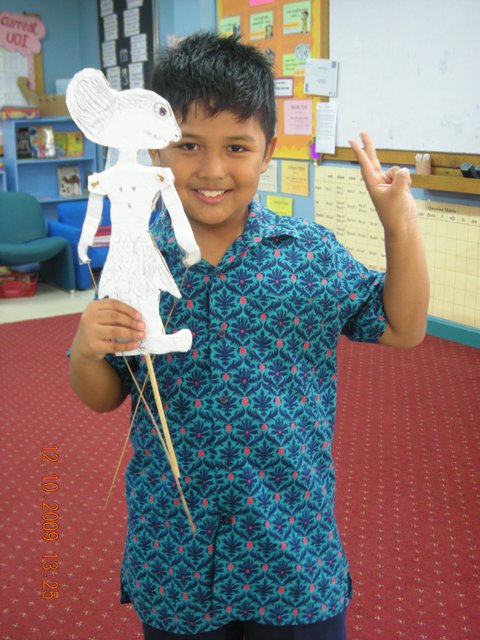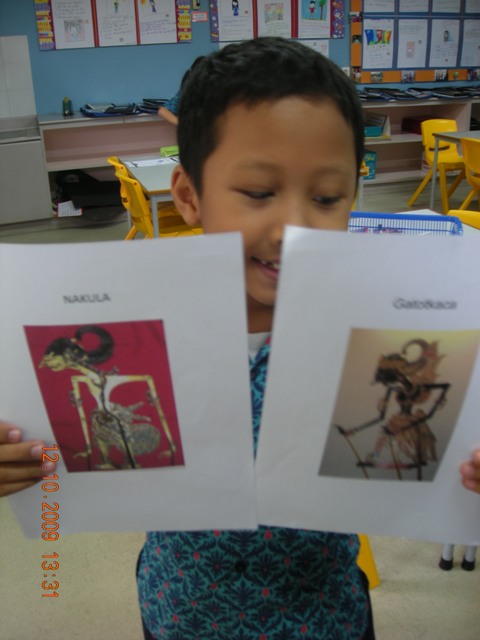


Saya adalah salah seorang yang "agak malas" menulis. Menulis yang saya maksud di sini adalah menggunakan tangan saya untuk menulis dengan benar, rapi dan yang paling menyebalkan adalah jika saya diminta untuk menulis dengan panjang (menulis cerita misalnya).
Apakah menulis menggunakan tangan (handwriting) itu penting?
berikut adalah informasi yang sangat berguna dari Louise Spear-Swerling tentan pentingnya "pelajaran menulis" diajarkan khususnya di Sekolah Dasar.
After a long period of neglect in education, attention to teaching handwriting in the primary grades may finally be returning. This attention can benefit many youngsters, including those with learning disabilities (LDs) involving handwriting, which may accompany reading disabilities, writing disabilities, nonverbal learning disabilities, and attention deficit hyperactivity disorder.
Although word-processing programs and assistive technology are undeniably boons to children with writing problems, technological advances do not eliminate the need for explicit teaching of handwriting. Furthermore, very modest amounts of instructional time in the earliest grades – kindergarten and grade one – may help to prevent later writing difficulties for many children.
Why handwriting is important
Contrary to the view that handwriting is a trivial skill, handwriting actually is important for a number of reasons.
One involves the concept of mental resources to which I have alluded in several other columns, in relation to reading and mathematics as well as writing. Just as effortful word decoding may impair reading comprehension, or lack of automatic recall may reduce the mental resources available for learning advanced computational algorithms in math, labored handwriting creates a drain on mental resources needed for higher-level aspects of writing, such as attention to content, elaboration of details, and organization of ideas.
Because handwriting is a basic tool used in many subjects – taking notes, taking tests, and doing classroom work and homework for almost every content area as well as in language arts classes – poor handwriting can have a pervasive effect on school performance.
Moreover, when handwriting is perceived as arduous and time-consuming, motivation to write may be greatly reduced, leading to a lack of practice that may further compound difficulties with writing.
Finally, handwriting in the earliest grades is linked to basic reading and spelling achievement; for example, when children learn how to form the letter m, they can also be learning its sound. Attention to the linkages among handwriting, reading, and spelling skills can help to reinforce early achievement across these areas.
Manuscript or cursive?
At one time, manuscript (print) writing was typically taught in first grade, whereas cursive was introduced later, usually in third grade. Historically, some authorities argued for the superiority of one form over the other for children with LDs, most often for the superiority of cursive over manuscript.
However, there is little evidence that cursive is easier to learn than manuscript, and there are clear advantages to having children focus on the form of writing similar to what they must read in print.
Most critically, children should be able to use at least one form to produce legible, reasonably effortless writing, and instruction should focus on the form that appears most likely to lead to that outcome, especially for older children with handwriting difficulties.
Assessment of handwriting skills
Assessment of handwriting should incorporate observations of execution, legibility, and speed of writing.
Execution includes correct and consistent pencil hold, posture, and letter formation. Counterproductive habits in these latter areas are not always obvious from looking only at writing samples and can greatly impede progress in handwriting. For instance, young children may "draw" a letter such as m using separate strokes, starting on the right side of the letter. Forming the letter beginning on the left side, without lifting the pencil from the paper, is much more conducive to building eventual speed of writing.
Legibility involves the readability of letters, as well as spacing within and between words.
Speed is important as children advance beyond the first few grades so that they can use writing efficiently in a variety of tasks.
If children have learned both manuscript and cursive, as is often the case with older youngsters, then assessment should consider the execution, legibility, and speed of both forms of writing.
Instruction in handwriting
Relatively modest investments of instructional time devoted to handwriting – perhaps the equivalent of ten or fifteen minutes daily – may pay off in preventing later writing problems, including difficulties with higher-level composition skills.
The early years of schooling are especially critical for handwriting instruction; once children have formed counterproductive habits in handwriting, such as poor pencil hold or inefficient letter formation, those habits can be difficult to change.
Even for young children, however, handwriting instruction should occur in the context of a broader program of written expression in which children learn many other writing skills and develop motivation to write.
Of course, children also should have access to word-processing programs and assistive technology, with appropriate accommodations as needed for individual students.
Here are a few specific suggestions for teaching handwriting:
* Teach children consistent formation of letters using a continuous stroke if possible.
Children should learn a highly consistent way to form a given letter every time they write it. Although some letters, such as f and t, require lifting the pencil from the paper to make a second stroke, teach letter formation using a continuous stroke (without lifting the pencil from the paper) when possible.
For example, teach children to write the letter b by starting at the top with a vertical stroke, then making the loop to the right without lifting the pencil, rather than having children form the vertical line and the loop in separate strokes.
* Focus initially on learning the motor pattern rather than perfect legibility or size.
When children are learning to form a new letter, it is helpful to begin with large movements such as forming the letter in the air; have children use a sweeping movement with the entire arm, not just the hand. This initial practice should emphasize learning the motor pattern with correct formation of the letter (e.g., as discussed for the letter b above) rather than writing the letter on paper with perfect legibility or size.
* Teach similarly formed letters together, and use an instructional sequence that takes into account both ease of formation and frequency in words.
For instance, the manuscript letters c, a, and d all begin with the same loop and can be taught in one group; i should be taught before y because it is simpler to form and is needed more frequently to write words.
* Separate reversible letters such as b and d.
Children appear less likely to confuse visually similar letters if they have learned one letter of a confusable pair well prior to introduction of the other letter of the pair. In addition, it can be helpful to teach children to form confusable letters differently; for example, b starts at the top whereas d starts with the loop.
* Use written arrow cues to help children remember how to form letters.
Especially when the teacher is working with large groups of youngsters, monitoring each child while he or she is writing may be difficult. Written arrow cues for tracing dotted letters and copying letters are important so that children do not inadvertently practice incorrect letter formation repeatedly.
* For children at beginning stages of reading and spelling, integrate handwriting instruction with instruction in letter sounds.
For instance, while children are practicing writing a given letter, they can also be saying the sound the letter makes.
* In teaching cursive, explicitly teach connections between letters as well as formation of single letters.
Unlike manuscript writing, cursive writing involves making connections between letters within a word. Once children can form individual letters, explicit teaching of letter connections is important.
Connections involving four letters – cursive b, o, v, and w – followed by a subsequent letter (e.g., as in the words bed, on, have, will) are often especially confusing for children, because unlike most cursive connections, these do not involve going back down to the bottom line before writing the subsequent letter.
* Aim for speed as well as legibility.
Whether children are learning manuscript or cursive, speed should not be emphasized until children can form letters legibly and from memory. With either form, however, children must eventually develop enough speed to use writing efficiently in tasks such as note-taking or test-taking.
It also is useful to distinguish different standards for legibility depending on the purpose for writing; for example, in taking notes, "messy" handwriting is entirely acceptable as long as children can easily read their own writing.
Examples of sources
Peer-reviewed journal articles
Berninger, V., & Graham, S. (1998). Language by hand: A synthesis of a decade of research on handwriting. Handwriting Review, 12, 11-25.
Connelly, V., Dockrell, J., & Barnett, J. (2005). The slow handwriting of undergraduate students constrains overall performance in exam essays. Educational Psychology, 25, 99-107.
Edwards, L. (2003). Writing instruction in kindergarten: Examining an emerging area of research for children with writing and reading difficulties. Journal of Learning Disabilities, 36, 136.
Graham, S., Harris, K. R., & Fink, B. (2000). Is handwriting causally related to learning to write? Treatment of handwriting problems in beginning writers. Journal of Educational Psychology, 92, 620-633.
Graham, S., Struck, M., Richardson, J.,& Berninger, V. (2006). Dimensions of good and poor handwriting legibility in first and second graders. Developmental Neuropsychology, 29, 43-60.
Graham, S., Weinstein, N., & Berninger, V. (2001). Which manuscript letters do primary grade children write legibly? Journal of Educational Psychology, 93, 488-497.
Other helpful sources
Berninger, V. (2004). Understanding the graphia in dysgraphia. In D. Dewey & D. Tupper (Eds.), Developmental motor disorders: A neuropsychological perspective (pp. 328-350). New York: Guilford.
Berninger, V. W., & Amtmann, D. (2003). Preventing written expression disabilities through early and continuing assessment and intervention for handwriting and/or spelling problems: Research into practice. In H. L. Swanson, K. R. Harris, & S. Graham (Eds.), Handbook of Learning Disabilities (pp. 345-363). New York: Guilford.
Troia, G.A. (2006). Writing instruction for students with learning disabilities. In C.A. MacArthur, S. Graham, & J. Fitzgerald (Eds.), Handbook of writing research. New York: Guilford.
Salah satu strategi yang dilakukan penulis agar siswa/i merasa lebih nyaman dan tidak mudah mengeluh karena merasa "capek" saat menulis adalah melakukan "senam tangan" sebelum menulis. Beberapa contoh senam tangan yang dilakukan penulis untuk siswa/i kelas 2A GJIS adalah melenturkan otot-otot tangan menggunakan "counters" dan juga melakukan gerakan menempelkan jempol ke telunjuk, jempol ke jari tengah, dst. Bisa dimodifikasi dengan "speed" yang berbeda-beda dan juga dengan menutup mata. Strategi yang lain adalah siswa dapat bermain dengan "clay". Komentar positip datang dari siswa/i salah satu efek yang mereka rasakan dari "senam tangan" ini adalah mereka merasa lebih enak/lentur tangannya saat menulis.
Semoga bermanfaat...

